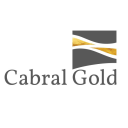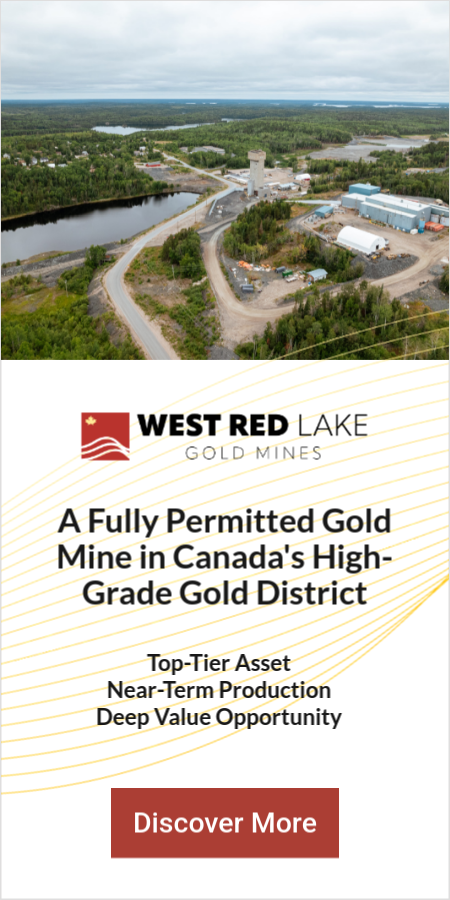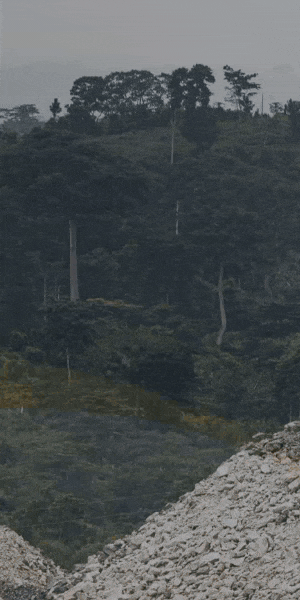Cabral Gold Extends High-Grade Mineralization at Machichie NE & Signals Resource Expansion Potential at Cuiú Cuiú

Cabral Gold's 7m @ 5.1 g/t intercept at Machichie NE extends high-grade mineralization 50m down-dip, reinforcing district-scale growth at Cuiú Cuiú with Q3 2025 construction decision planned.
- Cabral Gold's 7-meter intercept grading 5.1 grams per tonne (g/t) gold at Machichie NE extends high-grade mineralization by an additional 50 meters down-dip, reinforcing the large-scale discovery potential within the Cuiú Cuiú district.
- The target lies within 650 meters of the MG deposit and 150 meters of Machichie Main, positioning it as a meaningful near-mine growth corridor tied directly to existing National Instrument 43-101 resources.
- The Updated Preliminary Feasibility Study (PFS) released in July 2025 for the oxide starter operation delivers strong project economics, with a 78 percent after-tax Internal Rate of Return (IRR), United States Dollar (USD) $73.9 million Net Present Value at 5 percent discount rate (NPV5), and USD $37.7 million initial capital expenditure (capex), providing a low-cost pathway to production and potential self-funded expansion.
- Near-term catalysts include a multi-rig drilling campaign targeting resource expansion across the district, ongoing result releases from recent drilling, and a construction decision planned for the third quarter (Q3) of 2025.
- High-grade intercepts, district-scale potential, and strong economics collectively position Cabral Gold for a potential valuation uplift as the company advances toward production while expanding its deeper hard-rock resource base.
High-Grade Confirmation Reinforces District-Scale Potential
Cabral Gold's latest drill intercept at Machichie NE represents a high-signal data point in a market increasingly rewarding near-surface economics and high-margin ounces. The 7-meter intersection grading 5.1 g/t gold, including higher-grade sub-intervals of 0.9 meters at 19.5 g/t and 0.7 meters at 6.2 g/t, extends known mineralization 50 meters down-dip and 110 meters below previous reverse circulation (RC) drilling. This result strengthens the geological model for a district-scale system within Brazil's Tapajós Gold Province, one of the most prolific placer gold regions globally with an estimated 30 to 50 million ounces (Moz) of historic production.
For investors, the significance lies in the convergence of exploration upside and advancing development economics. High-grade continuity at Machichie NE, coupled with the company's low-capex oxide starter operation, creates a dual-value proposition: near-term production cash flow and medium-term resource expansion potential.
Understanding the Strategic Importance of Machichie NE
Machichie NE is located 150 meters northeast of Machichie Main and 650 meters from the MG deposit. Both MG and Machichie Main contain Indicated Resources included in the July 2025 PFS and represent the focus of the initial starter operation. This proximity supports a resource clustering thesis, enabling potential infrastructure sharing and operational synergies that could reduce the capital intensity required for future resource conversion.
The strategic value lies in its spatial relationship to deposits advancing toward production. Satellite deposits within close proximity to planned development areas benefit from lower incremental development costs, simplified logistics, and reduced permitting complexity. For institutional investors, this translates into reduced capex intensity per incremental ounce and enhanced operational scalability as the company transitions from oxide heap leach operations to potential hard-rock processing.
Geological Characteristics Supporting High-Grade Systems
Machichie NE is hosted within a quartz-breccia structural zone that extends over 250 meters along strike and remains open in multiple directions. The project is located on the Tocantinzinho lineament, adjacent to GMining's Tocantinzinho gold mine, which provides a regional analogue for the style of disseminated, intrusive-hosted mineralization that Cabral Gold is targeting at depth. Both projects share the same mineralogy and metallurgy.
Drill hole DDH351 intersected mineralization below the oxide-saprolite interface, indicating the presence of fresh hard-rock sulphide material at depth. This suggests that the high-grade system extends beyond the near-surface oxide zones currently targeted in the PFS.
Alan Carter, President and Chief Executive Officer of Cabral Gold, highlighted the structural continuity:
"We've made four new hard rock gold discoveries since the [last resource update], including Machichie Main and Machichie Northeast."
The Latest Drill Intercept & What It Signals for Growth
Breakdown of the DDH351 Intercept
Drill hole DDH351 intersected 7 meters grading 5.1 g/t gold from a downhole depth of 135.7 meters, including two higher-grade sub-intervals of 0.9 meters at 19.5 g/t gold and 0.7 meters at 6.2 g/t gold. The intercept occurs below the oxide-saprolite transition, indicating fresh hard-rock mineralization that would require conventional milling or flotation for processing.
For institutional readers, the reported intercept represents downhole length, not true width. True widths may be approximately 50 percent of the downhole intercept, a standard adjustment accounting for the angle between the drill hole and the orientation of the mineralized structure. The grade remains economically significant and comparable to other high-grade systems in the Tapajós Province.
Extending Known Mineralization Down-Dip & Along Strike
DDH351 extends known mineralization 50 meters down-dip and is positioned 110 meters below the deepest RC holes drilled to date. This vertical extension demonstrates that the high-grade system persists beyond near-surface oxide zones and extends into fresh hard-rock material at depth. The zone remains open along strike and at depth, suggesting substantial potential for future resource expansion.
Continued drilling could support conversion of mineralization from Inferred to Indicated categories, which are critical for inclusion in economic studies. The ability to upgrade resource confidence categories directly impacts project valuation, as Indicated and Measured resources carry higher certainty and are weighted more heavily in Net Asset Value (NAV) models.
Reconciliation with Historical High-Grade Intercepts
The DDH351 intercept is consistent with previous high-grade results. Prior drilling has returned intercepts including 11 meters at 33.0 g/t gold, 12 meters at 27.7 g/t gold, and 5 meters at 24.5 g/t gold. The repeatability of these grades across multiple drill holes strengthens the geological model and reduces the risk that high-grade intercepts represent isolated anomalies.
Carter has emphasized the quality of drilling results:
"12 meters at 27.7 grams, 11 meters at 33 grams, 5 meters at 24.5 grams, very exciting area. Within the next few months, we should have resource estimates on both of those new discoveries."
Valuation Impact: Why High-Grade Growth Matters Now
The Market's Preference for High-Margin Ounces
High-grade ounces provide superior cash-flow potential relative to low-grade bulk tonnage projects. For pre-development companies, grade is often the most critical variable driving enterprise value per ounce (EV/oz) multiples, as high-grade systems offer lower All-In Sustaining Costs (AISC), faster payback periods, and higher margins at prevailing gold prices.
For Cabral Gold, the multi-target high-grade pipeline positions the company to capture valuation premiums as it advances toward resource expansion and eventual production.
Implications for Resource Expansion & Mine Planning
Machichie NE has the potential to evolve into a satellite feed source for planned processing areas, providing supplemental high-grade material that could extend mine life and improve blended head grades. The proximity to deposits in the development stage supports a staged growth model, in which the company transitions from oxide heap leach operations to integrated hard-rock processing as cash flow from Phase 1 supports capital investment in future phases.
Strengthening the Case for a Multi-Million Ounce District
Cabral Gold's current NI 43-101 resource base totals approximately 1.2 million ounces across all categories: 0.45 Moz Indicated primary (12.29 million tonnes at 1.14 g/t gold), 0.17 Moz Indicated oxide (11.11 million tonnes at 0.48 g/t gold), 0.46 Moz Inferred primary (13.63 million tonnes at 1.04 g/t gold), and 0.15 Moz Inferred oxide (12.22 million tonnes at 0.39 g/t gold). The ongoing multi-rig drilling campaign is designed to expand this resource base. The addition of high-grade hard-rock ounces from Machichie NE and other satellite targets could meaningfully increase the project's total endowment.
Carter has outlined the company's objective:
"The objective is to update the resource estimate towards the end of 2026… Currently, the resource estimate here is about half a million ounces. We're hoping to significantly expand that in the coming months."
Economics of the Cuiú Cuiú Oxide Starter Operation
The Updated PFS released in July 2025 delivers compelling economics: a 78 percent after-tax IRR, USD $73.9 million NPV5, USD $37.7 million initial capex, 10-month payback period, and life-of-mine AISC of USD $1,210 per ounce. These metrics reflect low capital intensity, rapid payback, and strong cash-flow margins.
The low initial capex is attributable to the free-digging nature of the oxide material, which eliminates the need for drilling, blasting, crushing, or conventional milling infrastructure. The oxide ore is amenable to heap leaching, a low-cost processing method that significantly reduces upfront capital requirements.
Free-Digging Oxide Material: Operational Advantage
The free-digging characteristics provide a significant operational advantage. Free-digging refers to the ability to excavate material using standard earthmoving equipment without drilling and blasting. This reduces operating costs, simplifies mine planning, and accelerates production ramp-up.
Phase 1 Cash Flow as a Catalyst for Phase 2 Growth
Cabral Gold's staged development model envisions using cash flow from Phase 1 oxide operations to support exploration drilling, resource expansion, and eventually the development of processing capacity for hard-rock material. This approach is designed to reduce reliance on external financing and mitigate dilution risk. The ability to generate internal cash flow is a critical determinant of project financeability.
Near-Term Catalysts & Development Timeline
As of October 2025, Cabral Gold is operating three drill rigs across multiple targets, including Machichie NE, Machichie Main, Jerimum Cima, MG, and Mutum/West Mutum. This multi-target approach accelerates resource updates and de-risks the geological model by testing multiple structural corridors simultaneously.
Carter has emphasized the current drilling effort:
"We are drilling on both Machichie Main and the Machichie Northeast area."
Pending Results & Their Potential Market Impact
Results have been returned on four additional diamond drill holes at Machichie NE in late November 2025. The ongoing release of drill results represents a significant near-term catalyst, as high-grade confirmation or new discoveries could trigger a valuation rerating.
Development Pathway to Production
Cabral Gold has planned a construction decision for Phase 1 oxide operations in Q3 2025, subject to the availability of materials and equipment, timeliness of government approvals, and other standard development dependencies. First production from the gold-in-oxide starter project is guided for during the second half (H2) of 2026. The company is pursuing project financing solutions through Q3 2025, with detailed engineering on the project design and in-depth engagement with suppliers currently in progress.
Strategic Positioning, Jurisdiction & Management Strength
Brazil's Tapajós Province as an Emerging World-Class Gold District
The Tapajós Gold Province is described as an emerging world-class gold district, with an estimated 30 to 50 Moz of historic placer gold production. Cabral Gold's project is located adjacent to GMining's Tocantinzinho gold mine. The presence of operating mines and established exploration projects positions the Tapajós Province as a recognized jurisdiction for gold exploration and development.
Management Track Record, Insider Alignment & Shareholder Support
Cabral Gold's management team has a demonstrated track record, with five grass-roots gold discoveries in Brazil, including the Tocantinzinho open pit gold mine and the Coringa underground mine. CEO Alan Carter co-discovered the Tocantinzinho gold deposit and has invested Canadian Dollar (CAD) $1.95 million in Cabral Gold. The presence of a technically competent and financially aligned management team is a material positive for investors evaluating Cabral Gold.
Cabral Gold's shareholder base includes institutional investors such as Eric Sprott, which signals market confidence in the company's strategy and execution capability.
The Investment Thesis for Cabral Gold
- High-grade continuity at Machichie NE strengthens the probability of near-term resource expansion, with an active 3-rig campaign designed to test multiple structural corridors.
- The Updated PFS released in July 2025 demonstrates strong project economics, with a 78 percent after-tax IRR, USD $73.9 million NPV5, and USD $37.7 million initial capex, providing a low-cost pathway to production through rapid payback and strong cash-flow margins.
- Multi-rig drilling and ongoing result releases create a near-term catalyst pipeline, with the potential for high-grade confirmation to trigger market rerating as resource confidence categories are upgraded.
- District-scale potential is supported by over 50 peripheral targets and proximity to the Tocantinzinho gold mine, positioning Cuiú Cuiú as a potential multi-million ounce district.
- Management track record and insider alignment reduce execution risk, with five previous gold discoveries in Brazil and CEO investment of CAD $1.95 million.
- Strategic positioning in Brazil's Tapajós Province offers an emerging world-class gold district, while the staged development model is designed to enable self-funded exploration through Phase 1 cash flow.
- Institutional support from investors such as Eric Sprott provides financial backing during the overlap period between exploration and development.
Why This Drill Result Matters for Investors
The 7-meter intercept grading 5.1 g/t gold at Machichie NE represents a structural extension that meaningfully strengthens the growth case for Cuiú Cuiú. The result confirms high-grade continuity at depth, extends mineralization 50 meters down-dip, and supports the thesis that the Machichie complex could evolve into a significant hard-rock resource. When combined with the company's low-capex oxide starter operation, active multi-rig drilling campaign, and planned construction decision in Q3 2025, the intercept forms part of a broader narrative of district-scale potential and near-term production. Cabral Gold remains a high-potential developer with a clear pathway to production and strategic positioning to capitalize on improving gold market fundamentals.
TL;DR
Cabral Gold's recent 7-meter intercept grading 5.1 g/t gold at Machichie NE extends high-grade mineralization 50 meters down-dip within Brazil's Tapajós Gold Province, demonstrating district-scale potential. The target sits within 650 meters of existing resources and remains open along strike and at depth. The Updated PFS released in July 2025 shows strong economics with a 78 percent after-tax IRR, USD $73.9 million NPV5, and USD $37.7 million capex for the oxide starter operation. With three active drill rigs, a construction decision planned for Q3 2025, and first production guided for H2 2026, Cabral Gold is advancing toward near-term production while expanding its 1.2 million ounce resource base through ongoing exploration across multiple high-grade targets.
FAQs (AI-Generated)
Analyst's Notes




Subscribe to Our Channel
Stay Informed



































